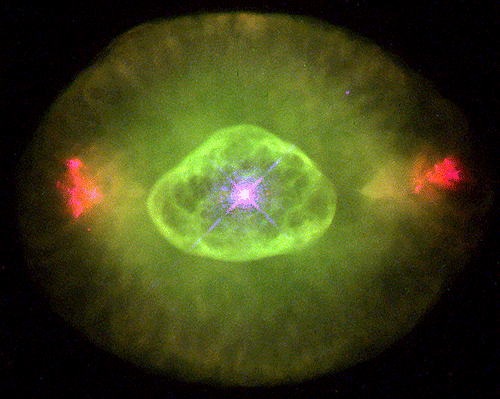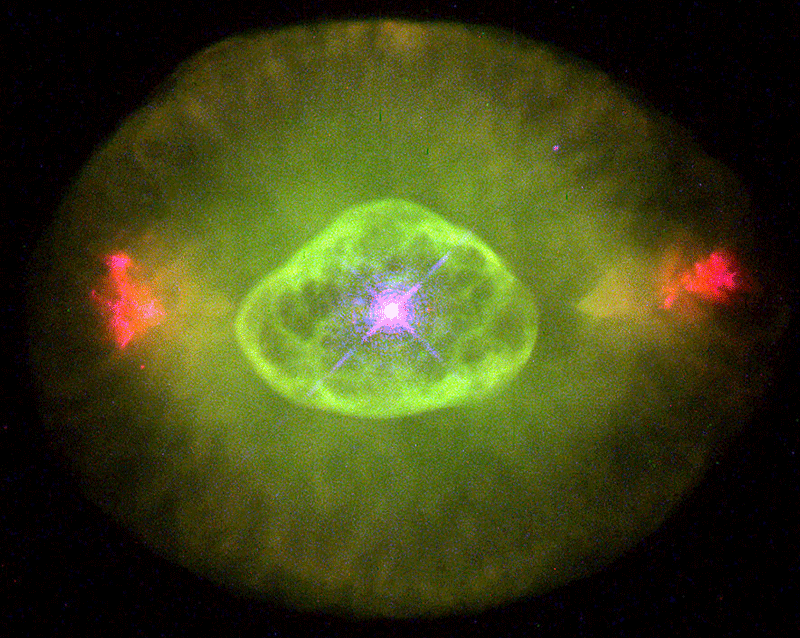Meetings: News from the Local and Distant Cosmos at the AAS 2017 Winter Meeting
The 2017 American Astronomical Society winter meeting, which took place in Grapevine, Texas, kicked off the year with all things astronomy for a good two thousand astronomers, educators, students, and journalists. Here are three stories from the conference that cover findings about both local and far-flung parts of the cosmos.
–Ana Lopes
“Shocking” Green Light from the Earliest Galaxies
The earliest galaxies were green, it seems. Matthew Malkan from the University of California, Los Angeles, and graduate student Daniel Cohen used infrared telescopes to investigate several thousand galaxies from 11 billion years ago and found that all of the galaxies were startlingly strong emitters of green light. Most galaxies in the present-day Universe shine in other colors, which depend on the type of stars they contain. Only a very small number of such galaxies and objects known as planetary nebulae have a green shade, and this is linked to oxygen that is doubly ionized by extremely hot stars. “The shock here is that if you go back in time to the younger Universe, everybody is doing it, not just one in a million galaxies, not just a few freaks,” Malkan said.
The finding suggests that the earliest galaxies are made up of stars that are hotter than today’s hottest stars. It also opens up a new field of research, said Malkan, who added that future space telescopes will be “going for this green” to find and study galaxies in the young Universe.
Mapping the Elements of Life in the Milky Way
There was also news about our very own Milky Way. John Holtzman and Sten Hasselquist from New Mexico State University reported that the abundance of chemical elements that make up all life forms on Earth—carbon, hydrogen, nitrogen, oxygen, phosphorus, and sulfur—varies across the Galaxy. Specifically, the inner part of the Galaxy has more of these elements than the outer part. They came to this conclusion by measuring the amount of each element in hundreds of thousands of Milky Way stars, using spectroscopy data from the Apache Point Observatory Galactic Evolution Experiment (APOGEE), a part of the Sloan Digital Sky Survey. Hasselquist explained that, because it operates in the near infrared, APOGEE can penetrate the dust layer in the Milky Way and observe stars throughout much of the Galaxy.
The upshots of this discovery? Hasselquist said that the results mean that star formation in the Milky Way proceeded at a much faster rate in the inner part than the outer part where Earth is located, and that the elements of life were therefore available in the inner part for a longer period of time. He did not want to speculate on what this longer period means for the chances of life in the inner part, but noted that “the longer time scale is tantalizing.”
Home of Mysterious Fast Radio Burst Located
A team of astronomers revealed that it had pinpointed the home of one of several enigmatic fast bursts of radio waves. A surprising home, it turns out. The host is a dwarf galaxy some 3 billion light years from Earth, not a large galaxy as the researchers would have guessed. Team member Jason Hessels from the Netherlands Institute for Radio Astronomy said the host is “probably smaller than this convention center.”
First spotted about a decade ago, fast radio bursts have since remained sources of unknown origin. Such mysteries in astronomy are somewhat rare, according to Sarah Burke Spolaor, another researcher in the team who is from the National Radio Astronomy Observatory in New Mexico. “Something that’s truly not understood does not come along every day,” she said. Finding the host of one such burst, even if it’s only one burst and it’s unclear what actually makes it flash, is thus remarkable—it took a suite of different telescopes. And it tells us that at least one of these bursts came from a small galaxy in the distant Universe. Plus, “this detection has really broken open the gates of a new realm of science and discovery,” said Burke Spolaor. That’s because the bursts should offer a new tool to study the intergalactic medium that lies between them and the Milky Way.





